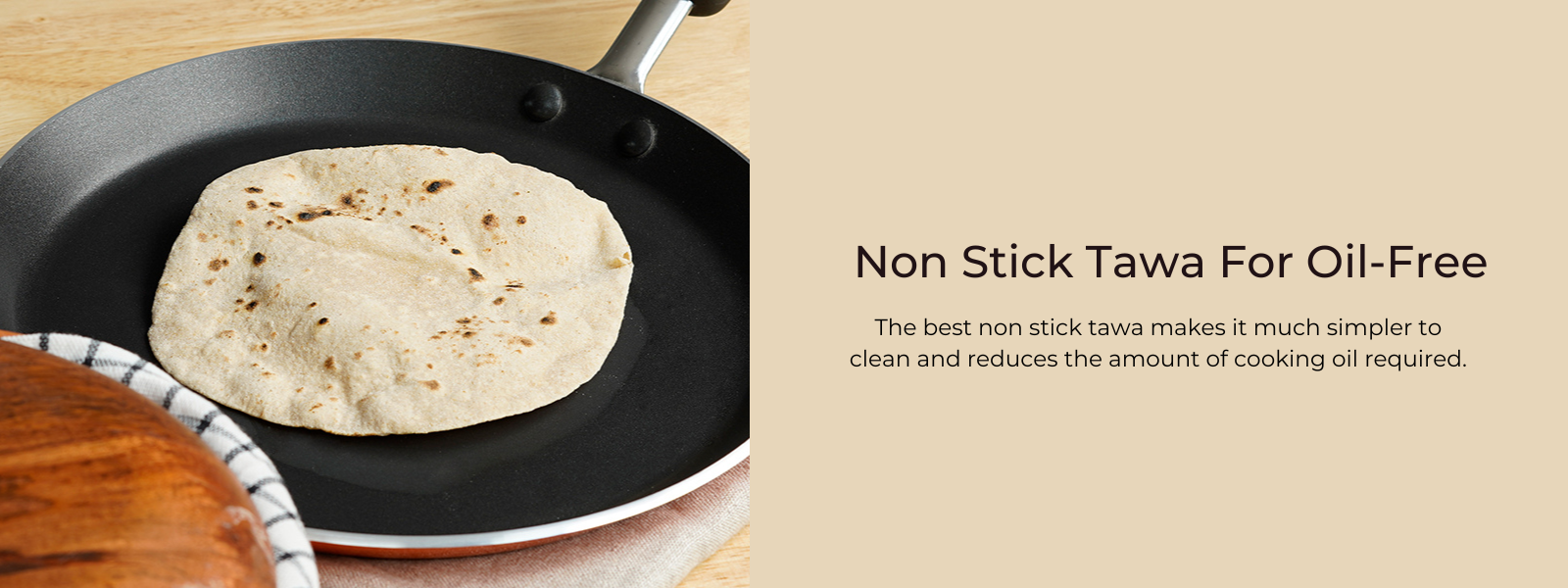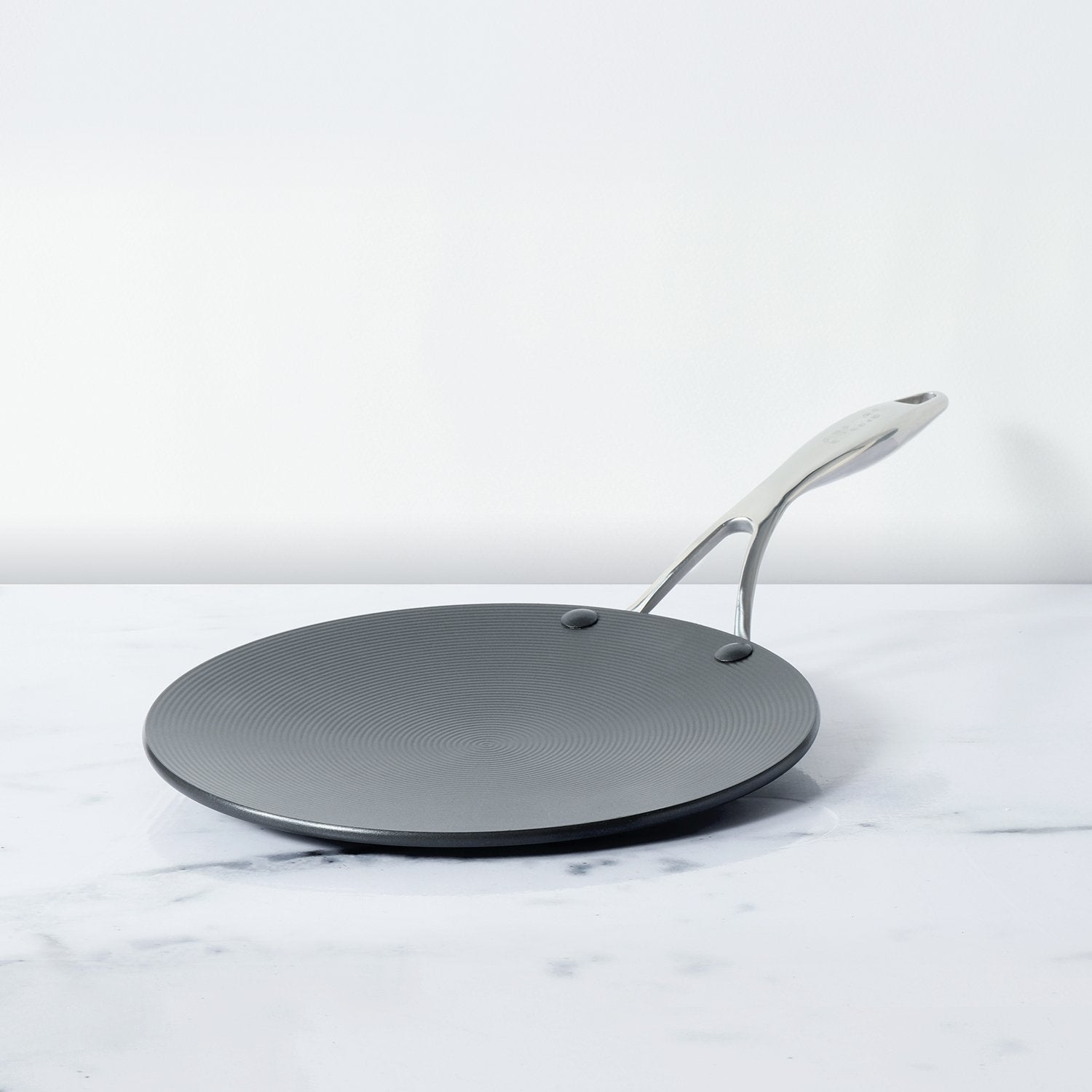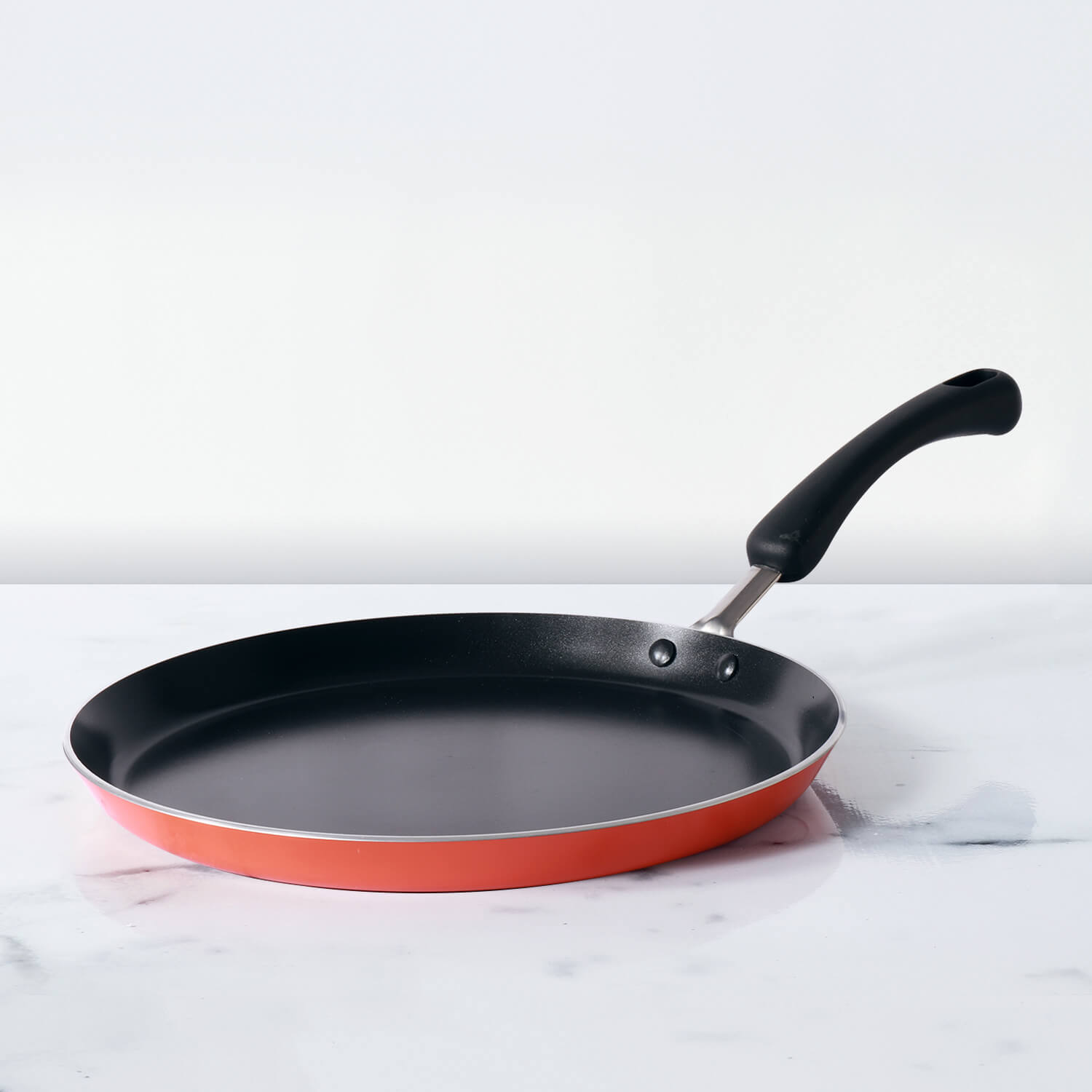An aluminium roti tawa is a cooking utensil specifically designed for making rotis,a chapatis, and other flatbreads in Indian cuisine. It is typically made from aluminum and features a flat, round surface that allows you to cook flatbreads evenly and with ease.
Table of Contents
What Is Aluminium Roti Tawa Made Of?
An aluminium roti tawa is a cooking utensil specifically designed for making rotis, chapatis, and other flatbreads in Indian cuisine. It is typically made from aluminum and features a flat, round surface that allows you to cook flatbreads evenly and with ease.
Is It Safe To Cook On An Aluminium Roti Tawa?
An aluminium roti tawa is made primarily from aluminum, a lightweight and good conductor of heat. Aluminum is a popular choice for making cooking utensils due to its excellent heat distribution properties and affordability. The tawa's body, including the cooking surface and sides, is typically crafted from aluminum to create a durable and efficient cooking tool for making rotis, chapatis, and other flatbreads in Indian cuisine.
In some cases, aluminium roti tawas may also have additional features such as non-stick coatings, textured surfaces, or handles made from different materials to enhance their functionality and ease of use. These features can vary depending on the specific design and brand of the roti tawa.
Is Aluminium Roti Tawa Sturdy?
Aluminium roti tawas are generally not as strong or durable as some other cookware materials, such as cast iron or stainless steel. Aluminum is a relatively lightweight and softer material compared to these alternatives. While aluminium roti tawas have their advantages, such as excellent heat conductivity and affordability, they may not be as robust in terms of longevity and resistance to wear and tear.
Here are a few considerations regarding the strength of aluminium roti tawas:
- Durability: Aluminium tawas can dent, scratch, or warp more easily compared to materials like cast iron or stainless steel. This is especially true if they are subjected to heavy or rough use.
- Warping: Rapid and extreme temperature changes can cause aluminium to warp, affecting the tawa's flatness and cooking performance.
- Maintenance: Aluminium tawas may require more careful handling and maintenance to prevent damage and preserve their quality over time.
- Cooking Implements: While using utensils made of softer materials like wood or silicone can help prevent scratching, metal utensils should be avoided to minimize damage to the non-stick coatings or the aluminium surface.
- Non-Stick Coatings: Some aluminium tawas come with non-stick coatings, which can wear off over time with frequent use and harsh cleaning.
If you prioritize strength and durability in your cookware, you might consider other options such as cast iron, stainless steel, or anodized aluminium. However, if you handle your aluminium roti tawa with care, avoid harsh treatment, and follow proper maintenance practices, it can still serve you well for making delicious rotis and other flatbreads.
Is Aluminium Tawa Good For Even Heating?
Yes, aluminium roti tawas are known for their excellent heat conductivity, which contributes to relatively even heating across the cooking surface. Aluminum is a highly efficient conductor of heat, which means that it heats up quickly and distributes heat evenly throughout the tawa. This characteristic is particularly beneficial when making rotis, chapatis, and other flatbreads where even cooking is essential.
Points To Consider:
Here are some points to consider about the even heating properties of aluminium roti tawas:
- Quick Heating: Aluminium tawas heat up rapidly, allowing you to start cooking sooner.
- Uniform Cooking: The even distribution of heat across the tawa's surface helps ensure that your rotis cook uniformly without hotspots.
- Responsive Control: Aluminum's rapid response to changes in heat levels gives you better control over cooking temperatures.
- Energy Efficiency: Due to its excellent heat conductivity, aluminium tawas can use less energy to maintain a consistent cooking temperature.
- Flavor Development: Even heating promotes consistent browning and cooking, enhancing the flavor and texture of your flatbreads.











Leave a comment